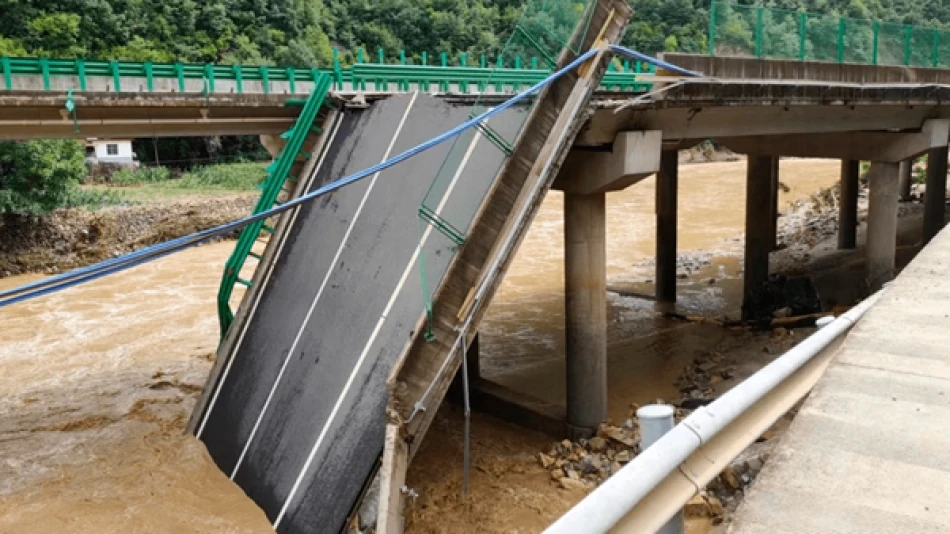
17 Killed as Bridge Collapses and Mine Accident Strikes China
China's Construction Safety Crisis Deepens as Bridge Cable Failure Kills 17 Workers
A catastrophic bridge construction accident in China's Qinghai province has claimed at least 17 lives, highlighting the country's persistent workplace safety challenges as it pushes forward with massive infrastructure projects. The incident, involving a sudden cable failure that sent workers plummeting into a river below, underscores the human cost of China's breakneck development pace.
Bridge Collapse Exposes Infrastructure Vulnerabilities
At least ten construction workers died Friday morning when a construction cable snapped during bridge work in northwest China's Qinghai province, according to state television reports. Four additional workers remain missing, with search and rescue operations ongoing. The cable failure caused the bridge's middle section to collapse suddenly, sending workers into the river below in what witnesses described as a nightmarish scene captured on state television footage.
The cause of the cable separation remains unclear, raising immediate questions about quality control and safety protocols on major infrastructure projects. Such incidents are particularly concerning given China's reliance on cable-stayed and suspension bridge designs for its expanding transportation network.
Pattern of Workplace Fatalities Signals Systemic Issues
This tragedy represents part of a broader pattern of workplace safety failures across China's construction sector. The country's rapid urbanization and infrastructure expansion—cornerstones of economic policy for over two decades—have consistently been shadowed by safety incidents that claim hundreds of lives annually.
Construction Sector Under Pressure
China's construction industry employs over 55 million workers and contributes roughly 7% of the nation's GDP. However, the sector's emphasis on speed and cost-efficiency often comes at the expense of comprehensive safety measures. Unlike developed markets such as Singapore or Germany, where construction fatality rates have declined significantly through stringent regulations, China continues to struggle with enforcement of safety standards.
The timing of this incident is particularly notable as China faces mounting economic pressures. Local governments, heavily indebted from previous infrastructure spending, are under pressure to complete projects quickly and within budget—conditions that historically correlate with increased safety risks.
Economic and Social Implications
Beyond the immediate human tragedy, such incidents carry significant economic consequences. Construction delays, insurance claims, and potential legal liabilities can substantially impact project costs. More importantly, repeated safety failures erode public confidence in infrastructure quality—a critical concern for a nation whose economic model depends heavily on public works spending.
The incident also highlights the vulnerability of China's migrant worker population, who typically staff such construction projects with limited safety training and job security. These workers, often from rural areas, face disproportionate risks while building the infrastructure that powers China's urban economy.
Regulatory Response Expected
Chinese authorities typically respond to high-profile industrial accidents with temporary safety campaigns and regulatory reviews. However, sustained improvement requires addressing underlying issues including inadequate inspection regimes, insufficient safety training, and the economic pressures that incentivize corner-cutting.
The bridge collapse in Qinghai serves as a stark reminder that China's infrastructure ambitions—both domestic and international through the Belt and Road Initiative—must be balanced against fundamental safety considerations. As the country's construction boom continues, the challenge lies in maintaining development momentum while protecting the workers who make it possible.
 Layla Al Mansoori
Layla Al Mansoori







